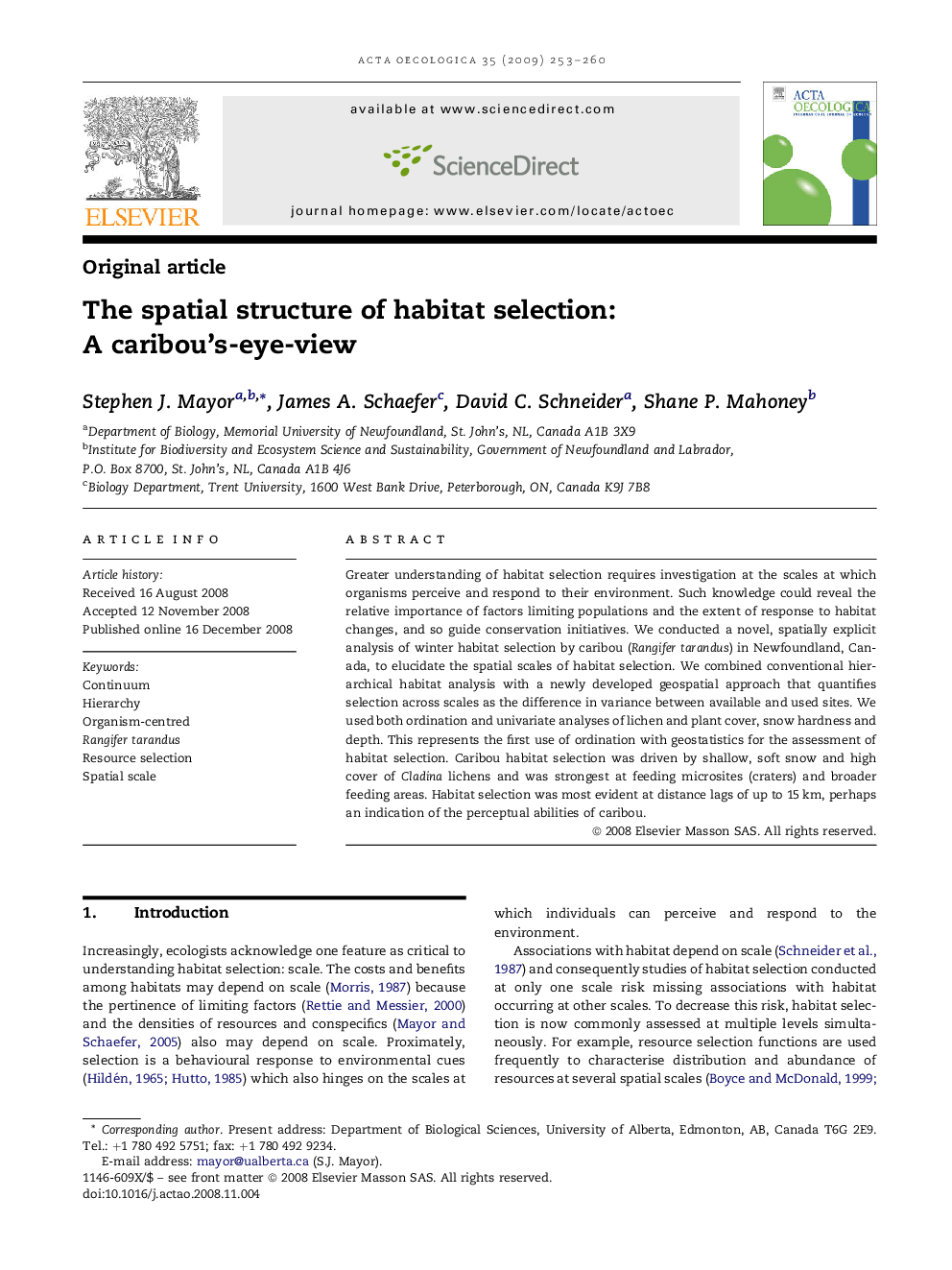| Article ID | Journal | Published Year | Pages | File Type |
|---|---|---|---|---|
| 4381287 | Acta Oecologica | 2009 | 8 Pages |
Greater understanding of habitat selection requires investigation at the scales at which organisms perceive and respond to their environment. Such knowledge could reveal the relative importance of factors limiting populations and the extent of response to habitat changes, and so guide conservation initiatives. We conducted a novel, spatially explicit analysis of winter habitat selection by caribou (Rangifer tarandus) in Newfoundland, Canada, to elucidate the spatial scales of habitat selection. We combined conventional hierarchical habitat analysis with a newly developed geospatial approach that quantifies selection across scales as the difference in variance between available and used sites. We used both ordination and univariate analyses of lichen and plant cover, snow hardness and depth. This represents the first use of ordination with geostatistics for the assessment of habitat selection. Caribou habitat selection was driven by shallow, soft snow and high cover of Cladina lichens and was strongest at feeding microsites (craters) and broader feeding areas. Habitat selection was most evident at distance lags of up to 15 km, perhaps an indication of the perceptual abilities of caribou.
